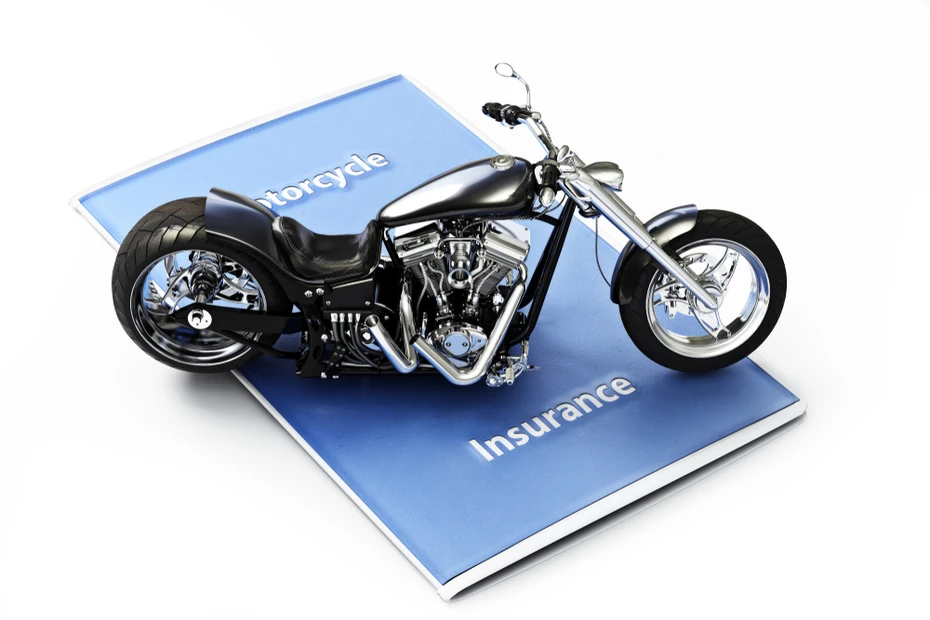How to Repair Minor Dents and Scratches in a Bike?
How To Take Care Of A Dent Or Scrape On Your Bike?
Owning a bike also comes with its set of responsibilities, including maintenance and repairs. One common issue that every bike owner faces at some point is the inevitable dent. Dents can be a real eyesore, diminishing the overall appearance of your beloved two-wheeler. But fret not! Minor dents are a part of the bike-owning journey and can be repaired with a bit of patience and some handy techniques. In this blog, we will guide you through the process of repairing minor dents in your bike, ensuring that it always looks as splendid as it performs on the open roads.
Table of Contents
- What qualifies as a "minor dent" on the bike?
- How to repair minor dents on the bike?
- How to Remove Dent from Bike Petrol Tank?
- How to Repair Bike Dent Scratches?
- Types of Bike Dent Removers:
- Factors to Consider While Choosing a Bike Dent Remover:
- Safety Tips to Keep Your Bike Dent-Free
- 1. Use a Good Quality Cover:
- 2. Park in a Safe Spot:
- 3. Install Crash Guards or Frame Sliders:
- 4. Maintain a Safe Distance While Riding:
- 5. Be Mindful of the Surroundings:
- 6. Use Proper Stands and Supports:
- 7. Regular Maintenance:
- 8. Avoid Overloading:
- 9. Educate Pillion Riders:
- 10. Invest in Good Quality Luggage Accessories:
- Why Should You Repair Minor Dents Yourself?
- Is There Bike Insurance for Small Damages?
- How to Buy a Zero Depreciation Cover?
- Final Thoughts
- FAQs
What qualifies as a "minor dent" on the bike?
Before diving into the repair process, it's essential to understand what exactly constitutes a "minor dent". A minor dent on a bike typically refers to superficial damage that affects only the external surface of the bike, such as the fuel tank, fenders, or body panels. These dents are usually small in size, with no accompanying cracks, paint damage, or structural compromise to the bike’s body.
Here are some characteristics that help define a minor dent:
- Size: The dent should be small, usually not more than a few centimetres in diameter.
- Depth: Minor dents are generally shallow, without causing a significant deformation of the body panel.
- Location: The dent should be located on an easily accessible part of the bike, where repair efforts can be straightforward and effective.
- No Additional Damage: A minor dent should ideally not be accompanied by paint chipping, cracking, or any other form of structural damage.
Identifying a dent as minor is crucial because it determines whether the dent can be repaired at home using simple DIY techniques or if professional help is necessary. Armed with this understanding, you are better equipped to decide the best approach for repairing dents, ensuring that your bike remains a source of pride and joy.

How to repair minor dents on the bike?
Repairing a minor dent at home can be a gratifying experience, not to mention the savings on professional repair costs. Here is a step-by-step guide to help you navigate through the process of repairing minor dents on your bike effectively.
1. Gather Necessary Supplies:
Begin by assembling all the necessary tools and materials. You might need:
- A hair dryer or heat gun
- Thick gloves
- Aluminium foil
- A can of compressed air
- Microfibre cloth
2. Clean the Affected Area:
Ensure that the dented area is clean and free from dirt or grease. Use a mild detergent if necessary, and then dry the area thoroughly.
3. Heat the Dent:
- Using a hairdryer or a heat gun, apply heat to the dented area. Make sure to keep the heat source a few inches away from the surface to avoid any paint damage.
- Move the heat source around the dent continuously to heat the area evenly.
4. Apply Aluminium Foil:
- Place a piece of aluminium foil over the heated dent.
- Wear thick gloves to avoid burns during the next steps.
5. Cool the Dent Rapidly:
- Holding the can of compressed air upside down, spray over the aluminium foil covering the dent. This sudden temperature drop will help the material contract and pop the dent out.
- Wait for a few moments to let the process take effect.
6. Inspect and Clean:
- Remove the aluminium foil and inspect the area. The dent should have popped out, returning the surface close to its original shape.
- Clean the area again using a microfibre cloth, ensuring there are no residues left.
7. Repeat if Necessary:
- If the dent hasn’t entirely disappeared, you can repeat the process until the desired result is achieved.
Things to Remember:
- Patience is Key: The process may require a few attempts, so patience is crucial.
- Safety First: Always ensure you’re working in a well-ventilated area and using the tools safely to avoid any accidents or injuries.
- Professional Help: If the dent doesn’t improve despite several attempts, it might be best to seek professional help.
With these steps, you should be able to repair minor dents on your bike, maintaining its aesthetic appeal and overall condition. So, roll up your sleeves and get ready to give your bike the care it deserves!
How to Remove Dent from Bike Petrol Tank?
Wondering how to remove dent from bike fuel tank? Removing a dent from a bike’s petrol tank can be a meticulous task, but with patience and the right techniques, it can be done effectively at home. Below are various methods to handle and rectify a dented petrol tank. Choose one that seems most appropriate depending on the size and severity of the dent.
1. Using a Plunger:
- Clean the dented area thoroughly, ensuring it’s free from dust and debris.
- Wet the rubber end of the plunger and the dented area slightly.
- Place the plunger over the dent, ensuring it has good suction.
- Gently push and pull the plunger, maintaining a steady pressure. The suction created should pop the dent back into place.
2. Using Boiling Water:
- Boil water and pour it over the dented area. This process will make the metal more flexible.
- Reach behind the dent and try to pop it out gently by pushing it from the inside.
- Once the dent pops out, pour cold water over the area to cool and fix the metal.
3. Using a Heat Gun:
- Heat the dented area using a heat gun, keeping it at a distance to avoid paint damage.
- Once the area is heated, put on protective gloves and gently push out the dent from behind.
- Cool the repaired area immediately with a wet cloth or by pouring cold water.
4. Using Specialised Dent Removal Kits:
- There are specific dent removal kits available in the market designed for this purpose.
- Follow the instructions provided with the kit. Usually, it involves attaching a pulling bridge to the dented surface and using it to pull the dent outward.
5. Professional Help:
- If the dent is too severe or if you’re unsure about the DIY methods, it may be best to seek professional help.
- Auto-repair workshops have specialised tools and expertise to handle such repairs efficiently.
Tips and Precautions:
- Ensure that the petrol tank is empty and fumes are minimal before starting the repair.
- Always handle the tank gently to avoid causing any further damage.
- Wear appropriate safety gear, such as gloves and eye protection, during the repair process.
- It's essential to assess the severity of the dent before deciding on a method. If the dent is large or complex, professional help might be the safest option.
A dented petrol tank can affect the aesthetics of your bike, but with careful and methodical approaches, it can be restored to good condition. Remember, the goal is to repair without causing additional damage, so choose a method that suits the nature of the dent and your level of comfort and expertise with DIY repairs.
How to Repair Bike Dent Scratches?
Scratches often accompany dents, marring the appearance of your beloved bike. However, worry not! Repairing such scratches is a feasible task that you can accomplish at home with the right products and techniques. Below is a systematic guide on how to effectively repair scratches on your bike.
1. Clean the Scratched Area:
- Begin by cleaning the scratched area meticulously. Remove any dust, dirt, or debris to have a clear view of the extent of the damage.
2. Sand the Scratched Surface:
- Use sandpaper to gently sand the scratched area. If the scratch is not too deep, a finer grit sandpaper, like 2000-grit, would work well.
- Wet the sandpaper slightly and gently sand the area to avoid removing too much paint.
3. Apply Scratch Remover/Rubbing Compound:
- After sanding, apply a scratch remover or rubbing compound over the scratch.
- Gently rub the compound using a microfibre cloth or a buffer pad, following the instructions on the product.
4. Touch-Up Paint:
- Choose a touch-up paint that matches the colour of your bike perfectly.
- Carefully apply the paint over the sanded and treated area using a small brush or applicator.
- Allow the paint to dry completely, as per the instructions on the paint product.
5. Polish the Repaired Area:
- After the paint is dry, polish the area to restore the shine.
- Use a suitable polishing compound and a microfibre cloth or polishing pad for this process.
- Ensure that the polishing is done gently and evenly to bring back the bike’s original lustre.
6. Apply Wax for Protection:
- Finally, consider applying a layer of quality wax over the repaired area.
- The wax will offer protection, ensuring that the new paint and the surrounding areas are shielded from elements and potential scratches.
Tips and Precautions:
- Always work in a well-ventilated area to ensure that the fumes from the paint and other products do not cause discomfort.
- Wear suitable protective equipment like gloves and masks.
- Take your time with each step, ensuring that each process is completed meticulously for the best results.
- Always follow the instructions provided on the products used for repair and painting.
Repairing scratches on your bike’s dent can be a gratifying process, bringing back its aesthetic appeal. With patience, precision, and the right tools and products, you can successfully handle this task at home. However, for deeper scratches and more severe damages, seeking professional help might be the most effective approach.
A bike dent remover is a tool or kit designed to repair and remove dents from the body of a bike. These removers come in various forms, such as suction tools, puller kits, or even comprehensive dent repair kits that include various tools and accessories to facilitate the removal of dents from different parts of the bike, including the tank, fenders, and other metal parts.
Types of Bike Dent Removers:
1. Suction Cup Removers:
- Design: They come with a strong suction cup that attaches firmly to the dented surface.
- Usage: Once attached securely, it allows the user to pull the dented metal back into its original position.
2. Slide Hammer Pullers:
- Design: These come with a weighted slide that moves along a rod, allowing for a strong and sudden pulling action.
- Usage: They are used for more significant dents, where a strong force is necessary for effective removal.
3. Glue Puller Kits:
- Design: These kits use special adhesive tabs that are glued to the dented surface.
- Usage: After the glue has set, a puller tool is used to tug at the tabs, helping to restore the metal to its original shape.
4. Comprehensive Dent Removal Kits:
- Design: These kits typically include various tools like glue pullers, slide hammers, and different sizes of pulling tabs.
- Usage: They offer a range of options for dent removal and are versatile in handling different sizes and types of dents.
Factors to Consider While Choosing a Bike Dent Remover:
- Severity of the Dent: Choose a remover that matches the severity and size of the dent. For minor dents, a suction cup remover might suffice, while more substantial dents might require a slide hammer.
- Material: Ensure that the remover is made from robust and durable materials to withstand the necessary force and pressure.
- Ease of Use: Consider tools that are user-friendly and don’t require extensive expertise or effort for effective dent removal.
- Cost: Opt for removers that offer good value for money, balancing cost with functionality and effectiveness.
A bike dent remover can be an invaluable tool, enabling bike owners to maintain their bikes’ aesthetics and condition without necessarily resorting to professional repair services. It allows for a more cost-effective and immediate solution to unsightly dents and damages. Having a basic understanding of the different types of dent removers and their applications will empower bike owners to make informed decisions and conduct repairs with confidence and efficacy.
Safety Tips to Keep Your Bike Dent-Free
Keeping your bike in pristine condition is an ongoing process, and prevention is always better than cure. Here are some practical tips to help keep your bike dent-free and looking fabulous at all times.
1. Use a Good Quality Cover:
Protect your bike from the elements, accidental scratches, and minor bumps by using a durable bike cover. A cover will safeguard your bike against unpredictable weather and reduce the risk of dents due to falling objects, like small branches or debris.
2. Park in a Safe Spot:
Choose your parking spots wisely. Try to park your bike in a designated parking area where it's less likely to get hit or knocked over. Avoid crowded or cramped spaces where the chances of accidental bumps are higher.
3. Install Crash Guards or Frame Sliders:
Consider installing crash guards or frame sliders on your bike. These accessories are designed to absorb impact and prevent the body of the bike from taking direct hits during a fall or collision, keeping it dent-free.
4. Maintain a Safe Distance While Riding:
While on the road, maintain a safe distance from other vehicles. It will give you enough reaction time to avoid sudden stops, reducing the risk of minor collisions and subsequent dents.
5. Be Mindful of the Surroundings:
Pay attention to your surroundings when parking or moving your bike. Watch out for obstacles, uneven surfaces, or any object that could potentially fall or come into contact with your bike.
6. Use Proper Stands and Supports:
Always use the proper stands and supports when parking your bike. It ensures stability and reduces the risk of the bike tipping over accidentally.
7. Regular Maintenance:
Keeping your bike well-maintained enhances its overall stability and performance. Regular maintenance helps in identifying and rectifying minor issues that might lead to accidents or dents in the future.
8. Avoid Overloading:
Avoid carrying excess weight or bulky items on your bike. Overloading can affect the bike's balance, making it more susceptible to falls and dents.
9. Educate Pillion Riders:
Ensure that anyone who rides with you knows how to get on and off the bike correctly and understands the importance of maintaining balance.
10. Invest in Good Quality Luggage Accessories:
If you carry luggage on your bike frequently, invest in good quality, well-fitted luggage accessories that are designed to distribute weight evenly and prevent any damage to the bike’s body.
By incorporating these tips into your daily riding and maintenance routines, you can significantly reduce the likelihood of acquiring unwanted dents and ensure that your bike continues to ride smoothly and look its best.
Why Should You Repair Minor Dents Yourself?
Repairing minor dents yourself can be quite an empowering experience. It doesn’t just save money but also adds to your skillset, enhancing your understanding and connection with your bike. Let’s delve deeper into why DIY dent repair is a good idea.
1. Cost-Effective:
Professional repair services come with their costs. By handling minor dents yourself, you save on labour charges and possibly some parts or materials that professionals might deem necessary to replace.
2. Learning Experience:
DIY dent repair is a fantastic way to learn more about your bike's bodywork. It can be a rich learning experience, enhancing your mechanical knowledge and proficiency.
3. Personal Satisfaction:
There’s a unique sense of accomplishment in successfully carrying out a repair task on your own. It brings personal satisfaction, boosting your confidence as a bike owner.
4. Customisation and Control:
Repairing dents yourself gives you control over the entire process. You can make custom adjustments or improvements as per your preferences, ensuring the results meet your expectations.
5. Convenience:
DIY repairs provide flexibility, as you can choose a convenient time to undertake the repair process. It saves you from the hassle of scheduling appointments and waiting for the bike to be repaired and returned.
6. Preventative Understanding:
When you get hands-on experience, you gain insights into potential vulnerabilities and how damages occur. This understanding can be instrumental in preventing future dents and damages.
7. Enhanced Maintenance Skills:
The skills acquired during the DIY dent repair process are not limited to dent fixing. They can be applied to various aspects of bike maintenance, improving your overall capability to look after your bike.
8. Immediate Action:
Being equipped to handle minor dents yourself allows you to take immediate action whenever necessary, ensuring that damages don’t exacerbate over time due to delayed repairs.
9. Building a Relationship with Your Bike:
DIY repairs help in building a stronger relationship with your bike. You become more attuned to its nuances, which can be beneficial in maintaining and riding it better.
10. Saving Money on Insurance:
Undertaking minor dent repairs yourself can also have a positive impact on your insurance. When small dents and damages are handled personally, there's no need to make a claim from your insurance company. This helps in maintaining a lower claim history, which can be beneficial in keeping your insurance premiums lower. Additionally, you also save on the deductible, the out-of-pocket expense you have to pay when making an insurance claim. This approach allows you to reserve your insurance for more significant repairs and damages, ensuring that it serves you optimally when truly needed.
Taking the DIY route for repairing minor dents on your bike has multiple benefits, from cost-saving, and maintaining your No Claims Bonus to skill enhancement. However, it’s also essential to know your limits. If a dent repair feels beyond your capability, seeking professional help is the wise choice to avoid any further damage. So, weigh your options, assess the dent, and then decide the best course of action!
Is There Bike Insurance for Small Damages?
Yes, there is bike insurance available that covers small damages, and it’s commonly known as Zero Depreciation or Bumper-to-Bumper insurance. This type of insurance cover is comprehensive and includes even minor repairs and damages, ensuring that your bike stays in optimal condition without heavy expenses on your part.
Understanding Zero Depreciation Bike Insurance:
- Comprehensive Coverage: Zero depreciation insurance covers almost all parts of the bike, providing broad coverage. It includes minor dents, scratches, and other small damages that regular policies might not cover.
- No Depreciation Factor: One significant benefit is that it doesn’t account for depreciation. It means that you get the full cost of the repair or part replacement without any deductions, making it ideal for covering minor damages.
- Higher Premiums: Since zero depreciation insurance offers comprehensive coverage, the premium is slightly higher compared to regular policies. But it ensures peace of mind as even small damages won’t burn a hole in your pocket.
- Claim Limits: Usually, there might be a restriction on the number of claims you can make in a year. It’s crucial to check the policy’s terms and conditions to understand the extent of coverage and claim limits.
- Eligibility: Zero depreciation covers are generally available for new bikes or bikes that are not older than a certain number of years. It’s advisable to check eligibility criteria as it may vary between insurance providers.
Considerations When Opting for Zero Depreciation Insurance:
- Assess Needs: Consider your usage, the conditions you ride in, and the likelihood of minor damages occurring frequently. If you feel your bike is at a higher risk of sustaining small dents and damages, this cover could be beneficial.
- Cost-Benefit Analysis: Weigh the higher premium against the benefits received, such as savings on minor repair costs, to ascertain if it’s a worthwhile investment.
- Policy Comparison: Explore various policies, and compare the coverage, premiums, and terms to choose a plan that offers the best protection against small damages.
Having a zero depreciation bike insurance policy can be particularly advantageous for those wanting comprehensive protection for their bikes, ensuring that even minor damages are promptly and efficiently addressed without significant expenses.
How to Buy a Zero Depreciation Cover?
Acquiring a zero depreciation cover for your bike is a thoughtful decision, especially if you wish to avoid the financial burden of minor damages. The process is quite straightforward but involves considering various factors to ensure you get the best deal. Here’s a step-by-step guide to help you navigate through the process:
1. Research and Identify Suitable Insurance Providers:
Begin with comprehensive research. Explore different insurance companies and evaluate the zero depreciation covers they offer. Look for customer reviews, claim settlement ratios, and overall reputation in the market.
2. Understand the Policy Details:
Take the time to delve deep into the policy details. Understand what is included and excluded, the number of claims you can make in a policy year, eligibility criteria, and other essential terms and conditions.
3. Get Quotes:
Reach out to insurance providers or visit their websites to get quotes. Most insurance companies offer instant online quotes, which will give you a fair idea of the premium you’d have to pay for the zero depreciation cover.
4. Compare Policies:
Compare the quotes and the coverage details of various policies. Consider the cost-to-benefit ratio and ensure that the policy you choose offers comprehensive coverage for all minor and significant aspects.
5. Online Purchase:
Buying insurance online is often more convenient and might also fetch you better deals. Go to the insurance provider’s website, fill in the required details, choose the zero depreciation add-on, and make the payment.
6. Offline Purchase:
If you prefer offline purchases, you can contact insurance agents or visit the insurance office directly. Discuss your requirements, get clarity on all aspects, and then proceed with the purchase.
7. Review the Policy Document:
After purchasing, carefully review the policy document to ensure all aspects are covered as per your requirements. Verify all details and ensure that the zero depreciation add-on is included.
8. Renewal:
Zero depreciation covers are usually not a one-time purchase. They need to be renewed every year. Mark the renewal dates and ensure the policy is renewed on time to maintain continuous coverage.
Tips:
- Ensure you have the necessary documents such as the bike’s registration details, previous policy details (if any), and personal identification documents ready.
- Consider buying zero depreciation cover at the time of purchasing the bike or renewing the insurance policy.
- Remember, zero depreciation is an add-on cover and not a standalone policy. It comes along with a comprehensive or standalone own-damage bike insurance policy.
Having a zero depreciation cover brings peace of mind, keeping your bike in its best condition without hefty expenditure on minor damages. So, choose wisely and ride safely!
Final Thoughts
Maintaining the aesthetics and integrity of your bike is not merely about vanity; it's also about preserving its value and ensuring it remains a joy to ride. With tools like bike dent removers at your disposal, handling minor dents and scratches becomes a feasible and cost-effective task you can undertake at home. Understanding the range of available tools, such as suction cup removers, slide hammer pullers, and comprehensive dent removal kits, allows you to address dents with precision and care, tailoring your approach to the severity and location of the damage.
Choosing to repair minor dents yourself is not just a journey through the restoration of your bike’s physical appeal, but also a hands-on experience that deepens your connection and understanding of your two-wheeled companion. Armed with knowledge, the right tools, and a dash of patience, you can ensure that your bike braves the roads with as much grace and style as it did in its prime, making every journey a testament to your care and commitment. So, roll up your sleeves and bring back the shine and flawlessness of your cherished ride!
FAQs
- What is the best method to remove a minor dent from a bike?
- Answer: The best method depends on the size and location of the dent. For small dents, using a plunger or boiling water method could be effective. For slightly larger dents, you might want to consider using a bike dent remover tool or a specialised dent removal kit.
- Can all dents be fixed at home?
- Answer: Not all. Minor dents with no paint damage or creases can often be repaired at home. However, for deeper dents, sharp dents, or dents with paint damage, seeking professional help is advisable.
- Will repairing a dent at home affect my bike’s insurance?
- Answer: Repairing minor dents at home should not affect your insurance if the repair is done properly. However, for significant damages, it's advisable to file an insurance claim and get the repair done professionally.
- Do I need special tools to repair a bike dent?
- Answer: It depends on the method you choose. Basic tools like a plunger might work for small dents. For more effective removal, specific dent remover tools or kits are available in the market.
- What should I do if the dent is not coming out?
- Answer: If the dent is not coming out using DIY methods, it’s best to seek professional help to avoid causing further damage to your bike.
- Can dents lead to other issues in the bike?
- Answer: Yes, untreated dents can lead to issues like rusting or may weaken the affected part over time. It’s always best to repair dents promptly.
- How do I know if a dent is too severe to fix by myself?
- Answer: If the dent is deep, sharply creased, located in a difficult-to-reach area, or causing paint damage, it might be best to seek professional help.
- How can I prevent dents on my bike?
- Answer: Ensure that your bike is parked in a safe place, use protective covers, and be mindful while riding and navigating through tight spots to prevent dents.
- Can I use car dent remover tools for my bike?
- Answer: Some car dent remover tools may work, but it’s advisable to use tools specifically designed for bikes due to the difference in body structure and material.
- How much does a professional bike dent removal cost?
- Answer: The cost can vary based on the severity of the dent, location, and professional fees of the workshop. Getting a quote from multiple service providers is advisable for a cost-effective choice.














































